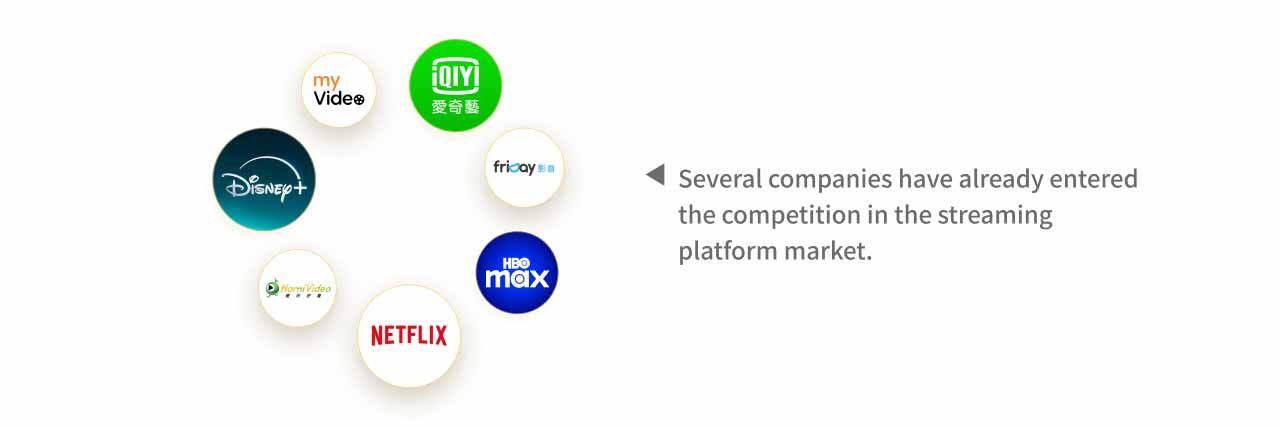Netflix was founded in California in 1997, initially starting as a DVD rental business before transitioning to a subscription-based model in 1999. In 2007, adapting to the rise of the internet, it launched its online streaming service, "Watch Now." By 2013, Netflix entered the original content market with its first self-produced series, House of Cards, pioneering the trend of streaming platforms creating their own content. Today, Netflix is the world's largest streaming platform, continuously expanding its content portfolio, investing heavily in original productions, and gradually growing its global footprint.
How did Netflix manage to stand out in an increasingly competitive market and secure its position as the industry leader? Today, let’s take a deep dive into Netflix’s global business strategy from an operational perspective.
Business Overview
Netflix's revenue has shown stable growth, with online streaming becoming its primary source of income. At the end of 2023, Netflix shifted its focus, announcing the complete shutdown of its DVD rental service to concentrate on original content, advertising, and gaming. After fully discontinuing DVD rentals, all of Netflix’s revenue now comes from streaming services, and the company continues to improve its profitability, demonstrating its resilience in a highly competitive market.
Although DVDs are no longer part of Netflix’s business, we will include a section on DVD rentals to provide a more comprehensive look at the company’s evolution.

Business Segment 1: DVD Rentals
DVD rentals were once a core part of Netflix’s early business model. However, with the rise of streaming, their significance gradually declined, leading to the service’s termination on September 29, 2023. Netflix's subscription-based rental model helped differentiate it from traditional pay-per-rental services, significantly improving the user experience.
By 2022, Netflix’s total revenue reached $30.6 billion, while the DVD segment contributed only $126 million, reflecting its diminished role. As consumer preferences shifted toward digital content, the DVD rental business gradually phased out, culminating in Netflix’s full transition to a streaming platform in 2023.
Business Segment 2: Streaming Services

Since launching in 2007, Netflix’s streaming service has become its core business, replacing DVD rentals and establishing the company as a dominant player in the global entertainment industry. By continuously expanding its content library, investing in original productions, and diversifying its business model, Netflix has strengthened its competitive edge.
As market competition intensifies, Netflix made strategic adjustments in 2024, particularly in the Asia-Pacific and Latin American regions, where ad-supported plans and pricing adjustments became key growth drivers.
Key Factor 1: Subscriptions
Netflix's primary revenue source is subscription fees, offering multiple plans to cater to different user needs, including standard, family, and ad-supported plans. By leveraging AI-driven recommendations, Netflix enhances user engagement and watch time, pushing its total subscriber count past 300 million.
However, as subscriber growth slows in mature markets, Netflix is relying on price adjustments to maintain revenue growth. The company is gradually phasing out low-cost, ad-free plans and encouraging users to opt for either ad-supported or premium ad-free options. Recently, Netflix announced price hikes in North America, Portugal, and Argentina.
Another significant change is Netflix’s crackdown on password sharing, a practice that has led to substantial revenue losses across the streaming industry. In May 2023, Netflix implemented a policy restricting account sharing to members of the same household. Contrary to concerns about subscriber churn, this move actually boosted user acquisition and revenue. Competitors such as Disney+ and Hulu have since followed suit.
In its Q1 2024 earnings report, Netflix announced that starting in 2025, it will no longer disclose subscriber numbers. Instead, key performance indicators will include viewing hours, advertising/member revenue, and operating margin. This shift indicates that Netflix is transitioning from focusing on subscriber growth to prioritizing Average Revenue per Member (ARM), emphasizing content quality and advertising expansion.
Key Factor 2: Content Partnerships & Licensing

In addition to producing original content, Netflix secures streaming rights to popular movies and TV shows through partnerships with major studios and production companies. It also licenses select original content to third-party platforms and releases physical versions (Blu-ray/DVD) to maximize revenue.
In 2024, Netflix capitalized on major events such as NFL live broadcasts and hit series like Squid Game Season 2 to drive subscription growth. However, the company has observed that new users attracted by flagship shows tend to behave similarly to regular subscribers. This suggests that while content remains a key draw, long-term growth depends on overall platform and strategic optimizations.
Key Factor 3: Advertising Business
With subscriber growth slowing in mature markets, Netflix launched an ad-supported subscription plan in 2022 and has been gradually building its own advertising technology platform in partnership with advertisers.
Acceptance of ad-supported plans has been particularly strong in the Asia-Pacific and Latin American markets, regions with significant user growth potential. This shift is expected to provide Netflix with a stable advertising revenue stream, further strengthening its long-term growth outlook.
Key Factor 4: Ad-Supported Plans
By offering lower-cost plans, Netflix is attracting a broader audience, particularly in emerging markets and price-sensitive demographics. By late 2024, monthly active users (MAUs) for ad-supported plans had reached 70 million, with subscriber growth remaining steady.
However, as the user base for ad-supported plans expands, the additional advertising revenue may not fully offset lower subscription prices in the short term. In regions like Asia-Pacific and Latin America, where Cost Per Mille (CPM) and subscription prices are lower, the ARM (Average Revenue per Member) dilution effect may be a short-term concern. Netflix's long-term growth will depend on scaling its ad business and optimizing revenue per user.
This strategy highlights Netflix’s flexible market approach—in mature markets, revenue growth is driven by price increases, while in emerging markets, ad-supported plans fuel subscriber growth, striking a balance across different regions.
Key Factor 5: Advertising Technology & Platform Development
Currently, Netflix runs its ad business using Microsoft’s technology, but it is gradually transitioning to its in-house advertising platform to reduce dependence on external providers and gain greater control over its ad operations.
The new platform was first tested in Canada in late 2024 and is set for global rollout by the end of 2025, marking a significant milestone in Netflix’s advertising strategy.
By developing an in-house advertising platform, Netflix enhances its technological independence while offering advertisers more flexible purchasing options, including programmatic buying, real-time bidding, and long-term contracts.
This move simplifies the ad-buying process, particularly for small and medium-sized businesses new to digital advertising, allowing Netflix to expand its reach within the advertising market.
With the upcoming launch of its ad server, Netflix aims to optimize ad delivery, increase fill rates, and drive higher-margin advertising revenue, further differentiating itself from competitors in the streaming industry.
